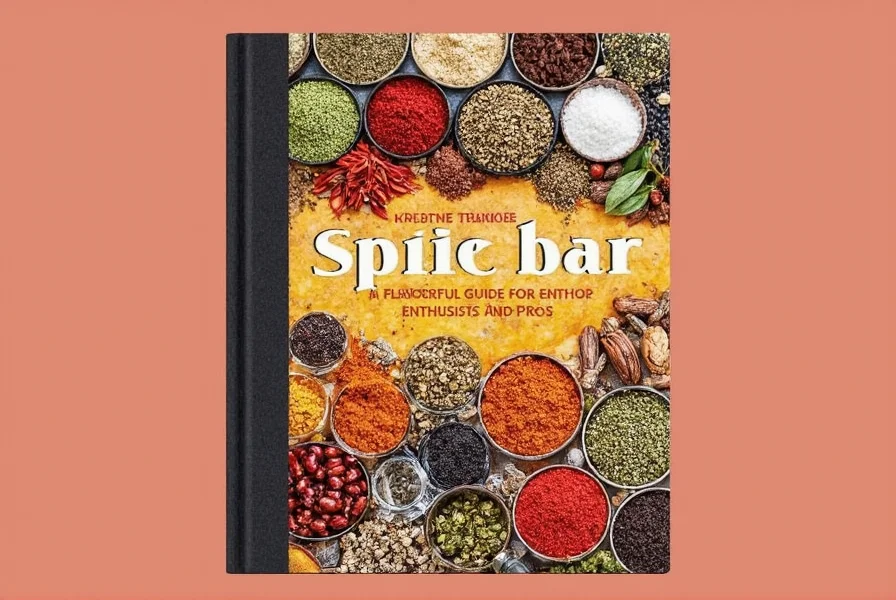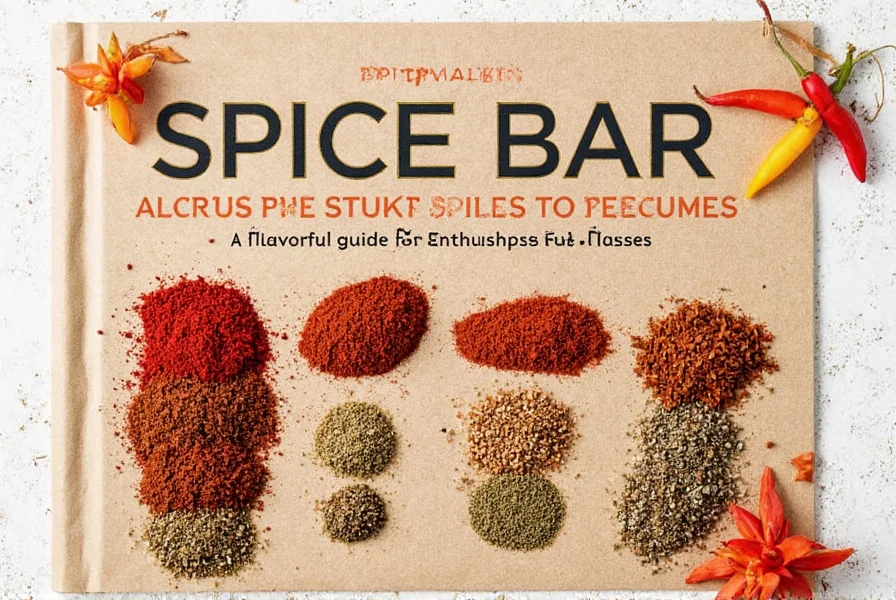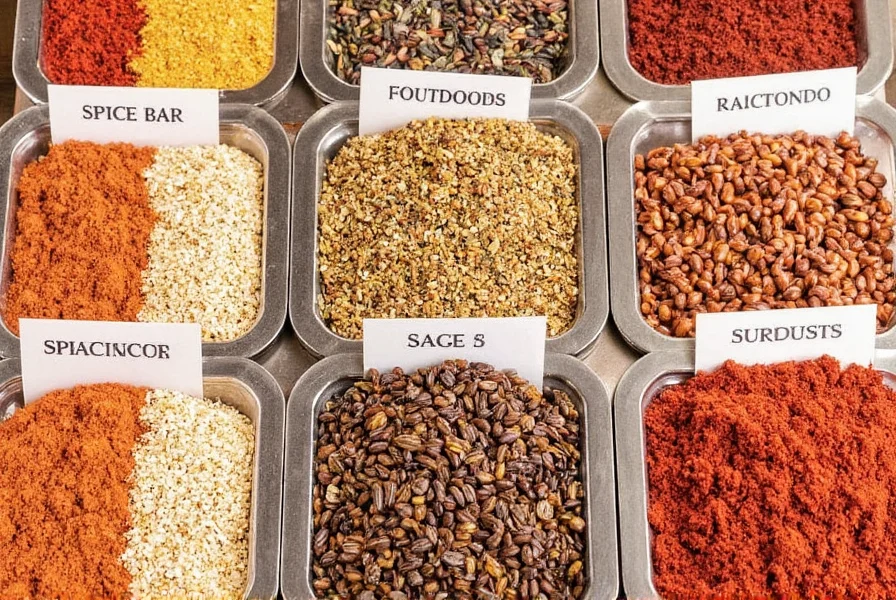Table of Contents
Introduction to the Spice Rack
If you're someone who loves to experiment in the kitchen or simply enjoys adding a kick of flavor to your meals, then a spice rack is a must-have. A spice rack is a dedicated station where you can store and access your favorite spices in one convenient place. It's not just about organization—it's about making your cooking experience more enjoyable and efficient.
Whether you're a professional chef or a home cook, having a well-stocked spice rack can make a world of difference. It helps you avoid the frustration of searching through cabinets for that elusive bottle of cumin or paprika. Plus, it adds a touch of style to your kitchen, turning a simple storage area into a functional work of art.
Practical Tips for Using a Spice Rack
Here are some practical tips to help you make the most out of your spice rack:
- Label everything: Use clear labels on your spice jars to avoid confusion and keep your rack looking neat.
- Group similar spices together: For example, place all your herbs next to each other and your ground spices in another section.
- Keep frequently used spices within reach: Place your go-to seasonings like salt, pepper, and garlic powder where they're easy to grab.
- Rotate your stock: Spices lose their potency over time, so use older ones first and replace them as needed.
- Invest in quality containers: Glass jars or airtight containers help preserve the freshness and aroma of your spices.
By following these simple tips, you'll be able to maintain an organized and effective spice rack that enhances your cooking experience. And let's be honest—there's something satisfying about having your spices neatly arranged and ready to go.

In-Depth Explanation of the Spice Rack
A spice rack is more than just a collection of jars—it's a thoughtfully designed system that supports your culinary creativity. The concept has gained popularity in recent years, especially among those who value both functionality and aesthetics in their kitchens. But what exactly makes a spice rack so special?
At its core, a spice rack serves as a centralized location for all your spices. This means you don't have to rummage through multiple cabinets or drawers to find the right seasoning. Instead, you can quickly locate what you need, which saves time and reduces stress during meal prep.
Another key benefit of a spice rack is its ability to enhance your cooking process. When you have everything in one place, you're more likely to experiment with new combinations and flavors. It encourages you to be creative with your seasoning and to think outside the box when it comes to flavor profiles.
Moreover, a spice rack can be customized to suit your personal taste and cooking style. Some people prefer to include only essential spices, while others go all out with a wide variety of herbs, salts, and blends. The possibilities are endless, and the result is a space that reflects your unique culinary personality.
In addition to its practical benefits, a spice rack also adds visual appeal to your kitchen. Whether you choose a minimalist design or a vibrant, colorful arrangement, it can become a focal point that elevates the overall look of your cooking area.
Buying Guide for the Perfect Spice Rack
If you're thinking about setting up a spice rack, there are several factors to consider before making a purchase. Here's a detailed guide to help you choose the right one:
Features to Look For
- Storage capacity: Consider how many spices you plan to store. If you have a large collection, look for a spice rack with ample shelf space or additional compartments.
- Material quality: Opt for durable materials such as wood, metal, or high-quality plastic. These materials not only last longer but also complement different kitchen styles.
- Accessibility: Choose a spice rack with an easy-to-reach layout. You should be able to open jars and access spices without any hassle.
- Design and aesthetics: Your spice rack should match your kitchen decor. Whether you prefer modern, rustic, or industrial styles, there's a design that will fit your space perfectly.
Advantages of Different Types
| Type | Advantages |
|---|---|
| Wall-mounted spice racks | Save counter space, ideal for small kitchens |
| Countertop spice racks | Easy to access, great for frequent use |
| Modular spice racks | Customizable, allows for expansion as your spice collection grows |
| Hanging spice racks | Space-saving, perfect for apartments or compact kitchens |

Use Cases and Target Audience
The spice rack is suitable for a wide range of users, including:
- Chefs and culinary professionals: They can streamline their workflow by keeping all essential spices at their fingertips.
- Home cooks: A spice rack helps them save time and reduce clutter while enhancing their cooking experience.
- Food bloggers and content creators: A visually appealing spice rack can serve as a backdrop for recipes and tutorials.
It's also perfect for those who enjoy hosting gatherings or experimenting with global cuisines. With a well-organized spice rack, you can easily create complex dishes with the right balance of flavors.

Suitable Occasions
A spice rack is useful in various scenarios, such as:
- Weeknight dinners: Quickly season your meals without disrupting your routine.
- Meal prepping: Organize your spices in advance to make cooking more efficient.
- Seasonal cooking: Swap out seasonal spices like pumpkin pie spice or holiday blends to match the occasion.
- Parties and events: Keep your spice rack stocked with flavors that complement your menu.
With the right setup, a spice rack becomes a valuable tool that supports your cooking goals and enhances your overall kitchen experience.
Frequently Asked Questions About Spice Racks
How often should I replace my spices to maintain optimal flavor?
Whole spices typically stay fresh for 2-3 years, while ground spices maintain their potency for about 1-2 years. For best results, check your spices annually by smelling them - if the aroma is weak, it's time to replace them. Proper storage in airtight containers away from heat and light will help extend their shelf life.
What's the most efficient way to organize spices in a spice rack?
The most efficient organization method is to group spices by usage frequency and cooking style. Keep daily essentials like salt, pepper, and garlic powder at eye level and within easy reach. Group similar spices together (baking spices, savory spices, international blends), and arrange them alphabetically within each category for quick identification. Consider using clear labels with consistent formatting for visual clarity.
How many spices should a beginner's spice rack contain?
A well-rounded beginner's spice rack should contain 8-12 essential spices that cover most cooking needs: salt, black pepper, garlic powder, onion powder, paprika, cumin, oregano, basil, cinnamon, red pepper flakes, cayenne pepper, and curry powder. As you develop your cooking style, you can expand your collection with more specialized spices that match your preferred cuisines.
What's the difference between a spice rack and other storage solutions?
A spice rack is specifically designed for organizing spices with dedicated compartments and easy access. Unlike general storage solutions like drawers or cabinets, spice racks provide visibility, quick retrieval, and space optimization for spices only. They're purpose-built for culinary efficiency rather than multi-purpose storage.
How can I prevent my spices from clumping together?
Clumping occurs when spices absorb moisture. To prevent this, always use dry utensils when handling spices, ensure containers are completely sealed after each use, and consider adding silica gel packets to your spice storage area. For spices prone to clumping (like garlic powder), you can place a few grains of uncooked rice in the container to absorb excess moisture. Store your spice rack away from steam sources like stoves and dishwashers.
Can I create a DIY spice rack on a budget?
Absolutely! You can create an effective DIY spice rack using repurposed materials. Consider using wall-mounted shelves, picture ledges, or even a small bookshelf. Magnetic spice racks can be made using magnetic strips and metal spice tins. For a portable option, try using a tiered cake stand or a desk organizer. The key is to focus on accessibility and organization rather than expensive materials - consistent labeling and logical arrangement matter most.
Conclusion
In summary, a spice rack is a game-changer for anyone who loves to cook or wants to elevate their culinary skills. It offers convenience, organization, and a touch of personality to your kitchen. Whether you're a seasoned pro or a passionate amateur, a well-designed spice rack can transform the way you approach seasoning and flavor.
Remember, the key to a successful spice rack lies in thoughtful planning and regular maintenance. By labeling your spices, rotating your stock, and customizing your setup, you can create a space that works as hard as you do in the kitchen.
So, whether you're looking to simplify your cooking routine or add a stylish element to your kitchen, a spice rack is definitely worth considering. It's not just about storing spices—it's about creating a flavorful and functional space that inspires your culinary creativity every day.











 浙公网安备
33010002000092号
浙公网安备
33010002000092号 浙B2-20120091-4
浙B2-20120091-4